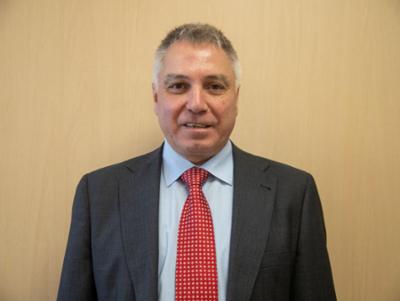

José Luis Fernández: Gradhoc arrives at C&R 2025 with the aim of transforming refrigeration into a strategic asset
Gradhoc comes to C&R 2025 with a clear ambition: to transform industrial and commercial refrigeration into a strategic asset for the food industry. Chairman of Gradhoc, José Luis Fernández Pazos, explains how digitalisation, artificial intelligence and predictive maintenance make it possible to reduce costs, ensure food safety and move towards a more sustainable model.
What is your company's main contribution to the food industry?
The great contribution that Gradhoc makes to society is to ensure the preservation of food for people’s health and well-being, while at the same time caring for the environment. Our approach helps reduce food waste and contributes to the decarbonisation of the planet. For our customers, the main contribution is the optimisation of energy consumption and maintenance costs of cooling systems, thanks to digital solutions based on artificial intelligence. In short, Gradhoc helps to make the cold chain safer and more efficient, while bringing environmental and economic benefits
Through which products and services is this achieved?
Our product is an SaaS platform. "Gradhoc", an artificial intelligence software for the global management of cooling systems. It integrates functions such as minimising energy expenditure, through our planner-optimiser; performing maintenance and regulation of the plant, reporting knowledge and information to service technicians, provided by the digital twin; advanced reporting tools and control panels, with customised reports and electricity bill simulations; and integration with renewable energies, such as photovoltaic, to maximise the use of clean energy.
Our services include consultancy services to identify the best proposal for each installation. And progressive, tailor-made implementation, taking advantage of the full technical potential of Gradhoc. The platform is also multi-protocol and multi-vendor, allowing it to be integrated into existing infrastructures, and is fully scalable, starting with a single installation and growing to multiple centres in different countries. Moreover, regular reporting facilitates decision-making and continuous improvement.
It all makes for a value proposition to make the installations more efficient, minimising failures before they occur, with the main objective of maintaining the product in a perfect state of conservation in the cold chain. We are talking about energy savings of between 20 and 40%; a reduction in maintenance costs of more than 25%; a reduction in the carbon footprint of between 20 and 35%; a longer useful life of the installations; and a reduction in food waste and the preservation of product quality, avoiding economic losses and reinforcing consumer confidence.
In short, we offer a qualitative leap in refrigeration management, with measurable benefits in both efficiency and sustainability.
How is the refrigeration sector transforming in our country?
Refrigeration is undergoing a decisive transformation. We are moving from a reactive model, with little data and many manual interventions, to a proactive and intelligent model, where much of the actions are self-executing and monitoring can be done remotely. This change increases the reliability of installations and reduces both downtime and unnecessary consumption.
The industry also faces the challenge of sustainability and environmental regulation: regulations are driving the use of more environmentally friendly refrigerants, such as CO₂ or ammonia; and the reduction of greenhouse gas emissions. In this context, optimising energy consumption becomes a necessity.
We would also like to highlight the link between our solutions and the Sustainable Development Goals (SDGs 11, 12 and 13) by reducing emissions, improving resource efficiency and contributing to more sustainable cities and communities.
At Gradhoc we want to be a leader and a trusted partner in this journey, contributing our knowledge and our tools so that refrigeration ceases to be a traditionally "invisible" area and becomes a strategic factor for competitiveness, food quality and respect for the environment.
How important is your company's participation in C&R 2025 and what innovations will you be presenting at the fair?
For Gradhoc, our participation in C&R 2025 is a strategic opportunity to raise awareness and expand our network of contacts with companies installing cooling systems, companies in the food industry, retail, and all those companies with air conditioning needs. The trade fair allows us to reinforce the value of digitalisation and intelligent maintenance as the cornerstones of innovation.
As for the new features to be presented, we highlight the following: new, more precise artificial intelligence algorithms, which improve all the platform's functionalities. For example, they optimise refrigeration systems by taking into account dynamic energy prices and weather forecasts. This makes it possible to anticipate demand peaks or temperature rises and to prepare the systems in advance.
An improved analytics module provides detailed reports and automatic energy optimisation recommendations. Improved food quality systems, which generate immediate alerts and reports when deviations in the cold chain are detected, such as a chamber that fails to maintain the right temperature. And integration with any other management system.
We would also like to highlight real cases of application. For example, in one supermarket chain we achieved a 35% reduction in electricity consumption and 40% fewer compressor operating hours through the use of predictive data. These tangible results show the direct impact of our proposal.
This way, at C&R 2025 we're looking to show both Gradhoc's technological evolution and our vision for the future of the sector.





